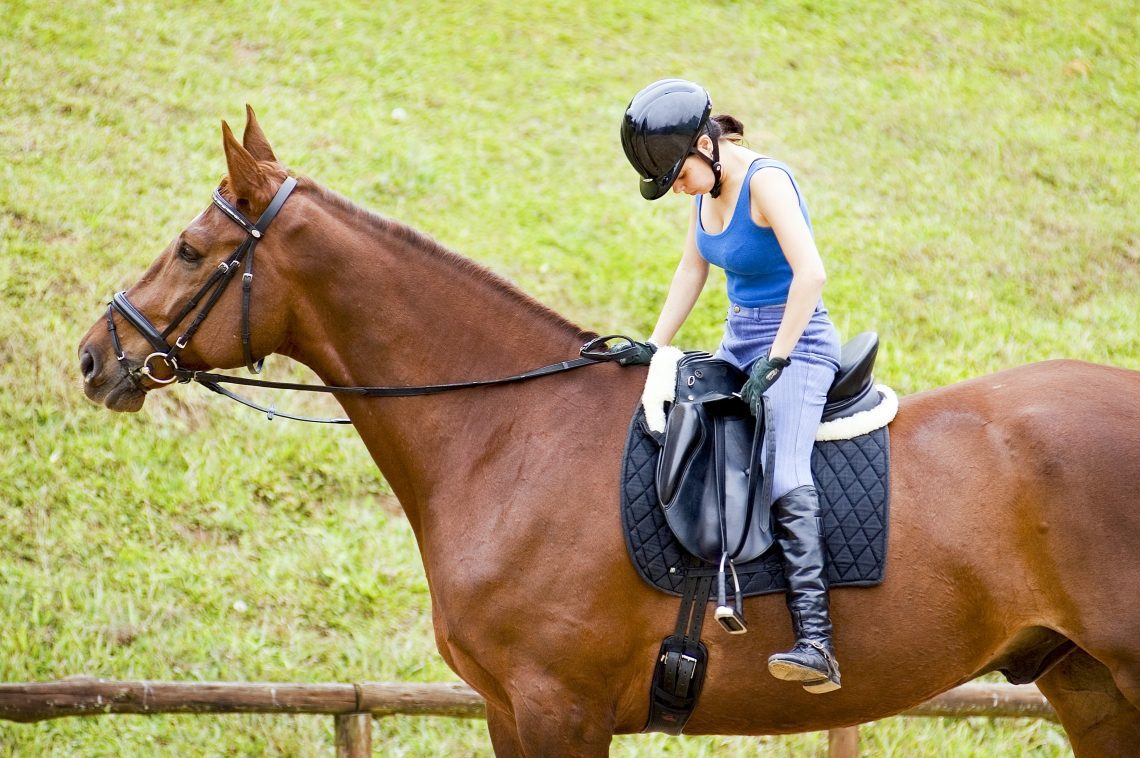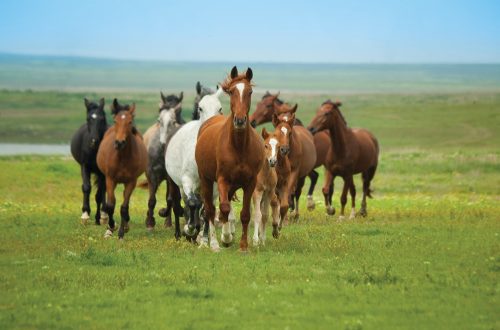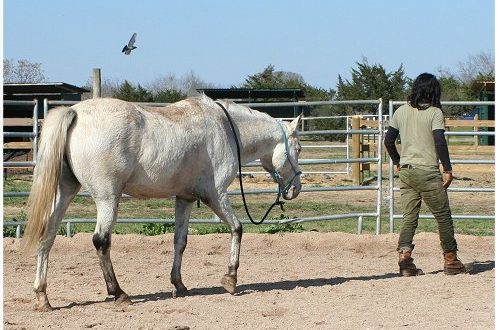
Learning to work without stirrups
Learning to work without stirrups
Riding without stirrups can greatly improve your posture, but only if you work correctly, without feeling insecure, without thinking only about staying in the saddle. In this article, you will find tips on how to properly train without stirrups to improve the interaction between you and your horse, as well as how to improve your riding skills without stirrups at fast gaits and over low obstacles.
Prepare
Before we start riding without stirrups, we will need to take care of a few things.
First, make sure you are in the correct, balanced position in the saddle. If you are unbalanced with stirrups, then without them you will not become more comfortable. Sitting in the right position, with stirrups of the right length, pay attention to where your feet are. Remember their position and aim for it when you work without stirrups.
Throwing the stirrups, you should feel completely safe. Your horse should calmly react to the stirrups dangling at his sides (lower the stirrups down, let the horse run without you on the lunge). For safety reasons, never throw the stirrups over the saddle. The exception is if you are working on cord.
Before starting work, warm up the horse and warm up yourself. It’s best to start riding without stirrups in the middle of your workout, before you’re too tired.
During a stop
To develop balance and coordination, and to avoid panicking when you lose your stirrup, it will be helpful for you to learn how to throw and catch stirrups.
Without looking down, simultaneously lift your feet out of the stirrups by lifting your toes and moving your legs back a few inches. Once you drop the stirrups, return your legs to the starting position as if they were still in the stirrups.
To return the stirrups back, move your legs back as you did before, turn your toes slightly towards the horse, lift your toes and smoothly move your legs forward, insert your feet into the stirrups. If you’re having trouble finding the stirrups, put your feet back in the correct position as if you had stirrups and try again. It is very important to move smoothly and slowly (sudden, wide movements will affect your balance). Practice this exercise until you can throw and pick up stirrups with ease without looking.
On the move
Are you doing well with the previous exercise? So you can move on!
Ask the horse to walk along the side of the arena. When you get her to a good stride, carefully take her feet out of the stirrups. Keep moving, remembering to keep your posture and look ahead. Take a few steps. Pay attention to the position of the eyes, shoulders, hips, arms, knees and feet – this is how you stay balanced and keep the correct posture.
Your legs should remain on the sides of the horse, slightly behind the girth. The thighs, knees and shins must be in constant contact with the sides of the horse. Too much pressure in one area of your leg can throw your balance off. It’s also important that you don’t squeeze the horse too hard. You need enough pressure to keep your foot firmly against the horse’s sides so that it doesn’t slip, but you don’t need to squeeze so hard that the horse starts to accelerate.
After you have walked a few steps, pick up the stirrups as you did during the stop, remembering to sit properly and look ahead. Walk a few steps, pick up the stirrups, and then drop again after a couple of steps. Step in both directions around the arena, maintaining correct posture, smoothly dropping and picking up the stirrups. Spend as much time walking as needed before moving on to the trot. It is worth working without stirrups from one to two minutes, gradually increasing the time of such a ride. As a result, you will have to drive up to 15 minutes. But do not forget that riding without stirrups is not a rest and not a reason to relax!
at the trot
When starting to work without stirrups at the trot, think about whether you feel confident at the training trot with stirrups? If not, then riding without stirrups should be postponed.
Once you have your horse in a good trot and in a training position, take your feet out of the stirrups by carefully lifting your toes and pushing your legs back. Try to make this movement as smooth as possible, as this will help you maintain a stable position in the saddle. If you drop the stirrups, moving your legs away from the horse’s body, you lose contact and your position becomes unstable.
After throwing the stirrups, remember your position: whether you are sitting correctly, whether your gaze is directed forward, check your shoulders, hips, knees and legs. You should not rest your hands on the horse’s neck, you should look where you want to go, heels should be down, toes up. Start with a couple of steps of training trot and then return to the stirrups. Gradually increase the repetitions of the trot until you can easily ride all over the arena. If at some point you feel that you are slipping, do not look down – this will upset your already precarious balance. Grab the horse’s mane and bring it into a walk. Clean up, rebalance, and start over.
As you get better and better, start changing directions, performing mane figures. Once you’ve mastered this, it’s time to try the posting trot.
Posting trot without stirrups requires considerable strength and balance from the rider. Begin this exercise when you are confident and correct in the training trot and walk without stirrups.
Embrace the horse with your legs—upper thighs, knees, and shins. As you rise, press into your knees and heels. Try posting a few paces at the trot, then take a break and start again. Gradually increase the repetitions of the posting trot until you can ride the whole arena in both directions.
When you are learning to post trot without stirrups, it is very important not to hold on to the reins to maintain your balance. If you feel unbalanced, grab the mane or go back to the training trot and work on it until you are strong enough to move to the post. Riding in stirrups and riding in two-point seating (with stirrups) are good preliminary exercises.
At a gallop
Once you can ride without a stirrup in training and posting trot, move on to cantering. Cantering may even be easier, especially if the horse’s canter is balanced and unhurried.
Ask the horse to come up into a canter and, as soon as he relaxes, take the legs out of the stirrups as described above. Do a few strides and then return your feet to the stirrups for a few strides. Gradually increase the canter reprises without stirrups. When you can canter without stirrups the circles and other dressage figures, and pick up the stirrups with ease, you will be able to overcome small obstacles without stirrups.
Overcoming obstacles
Before you can jump without stirrups, you will need to learn how to ride without stirrups in a two-point landing at all gaits. When you master this skill, use the horse’s comb – rest your hands on it about a third of the length of the neck and work until you can ride on your own, without support. It will also be useful if you learn how to overcome obstacles of medium height with stirrups.
To warm up, overcome a small cross or a vertical with stirrups. When you’re ready to drop the stirrups, make sure you’re in the right position, pay attention to your torso, arms, legs, eyes. Start with a small cross so that the horse doesn’t have to put in too much effort. Rest on the crest of the horse’s neck as you jump so you don’t grab the horse’s mouth, hit him in the teeth, or fall if you lose your balance. Land and then do a few canter strides before picking up the stirrups. Practice jumping in both directions and gradually progress to jumping through easy passages or jumping along the route.
The most important thing – focus on your landing! Anytime you feel like you’re off balance or sitting incorrectly, pick up your stirrups, move to a trot or walk, and straighten yourself out. You must sit confidently.
Learning to ride without stirrups will take time. You create new muscle memory and develop the strength of your legs. This process cannot take a couple of sessions.
Lessons without stirrups on the lunge can be of great benefit. So you can focus only on yourself without the need to control the horse.
You can also ask someone to videotape your work so you can look at yourself and see what needs to be improved and worked on.
Chandra Anton Watson. Translation Valeria Smirnova based on site materials http://contemporaryhorsemanship.com





